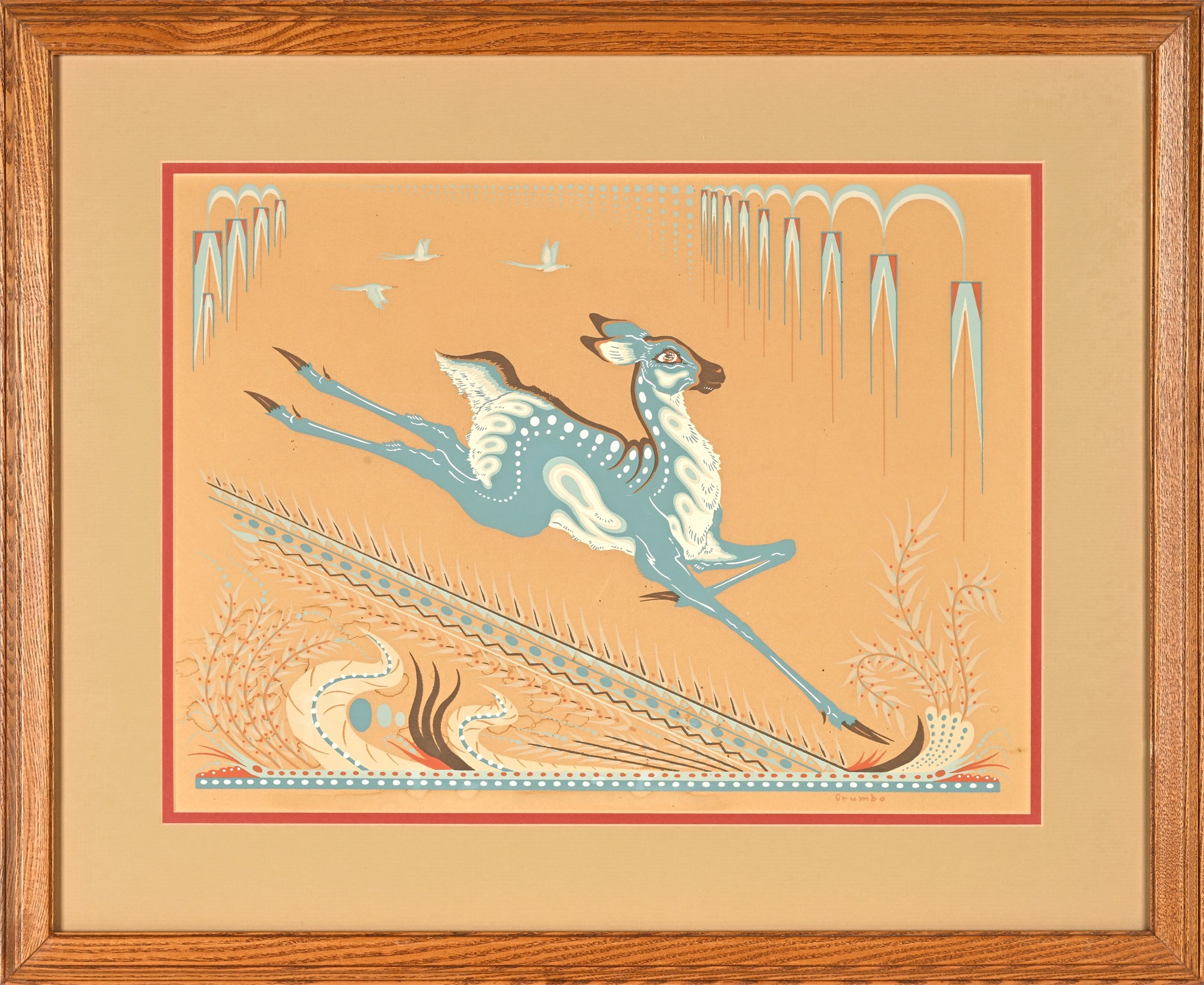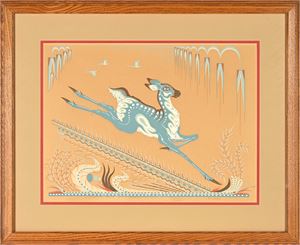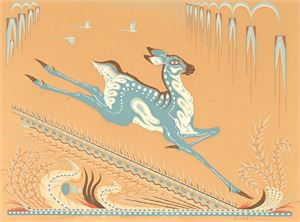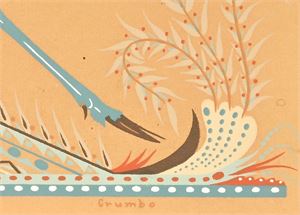Woody Crumbo Serigraph “Bounding Fawn” — Original Screenprint View Watchlist >
Seller Accepts Credit Cards
Payment and pickup instructions will be available on your invoice (under "My Account") at the conclusion of this auction.
Lot # H708
System ID # 23990067
Start Date
End Date
6 Watching
Woody Crumbo Serigraph “Bounding Fawn” — Original Screenprint
A graceful serigraph by Potawatomi artist Woody Crumbo (1912–1989), depicting a young fawn captured mid-leap. The stylized form of the deer is rendered in soft turquoise and ivory against a warm ochre field, accented by dotted markings and flowing contour lines. Abstracted vegetation, arch motifs, and a flight of birds add rhythm and symbolism to the composition, evoking both vitality and spiritual harmony. The artist’s name “Crumbo” appears in the screen at lower right.
Crumbo was a pioneer of silkscreen printing among Native American artists, often using multiple layered screens to create luminous depth. His wildlife subjects, particularly deer and fawns, are among his most admired works. Examples of this theme, sometimes titled Running Fawn or Bounding Fawn, appear in major collections including the Smithsonian Institution and have been offered at auction with consistent collector interest.
Condition:
Good condition overall. No damage noted. Colors remain vibrant with clean lines. Presented matted and framed behind glass; the frame shows only minor surface wear consistent with age.
Dimensions:
Overall (frame): 19 x 23 inches
Visible image: 12 x 16 inches
Artist Biography: Woody Crumbo (1912–1989)
Woodrow Wilson “Woody” Crumbo was a Potawatomi artist, dancer, and cultural ambassador whose career spanned painting, printmaking, music, and museum curation. Raised among Potawatomi, Creek, and Sioux families, he studied at the University of Oklahoma under Oscar Jacobson before directing the art program at Bacone College and later serving as curator at the Gilcrease Museum and the El Paso Museum of Art.
Internationally recognized for his paintings, prints, and performances as a Native dancer, Crumbo became one of the first Native artists to popularize silkscreen printing. His works combined bold color, stylized form, and cultural symbolism, often depicting wildlife and ceremonial life. Today, his art resides in major collections including the Smithsonian, the Metropolitan Museum of Art, and the Gilcrease Museum, securing his reputation as one of the most important Native American artists of the 20th century.




